![]() 19 Jun 2024
19 Jun 2024
Early societies which are often traced to the beginnings of human existence, from the remote past, millions of years ago. One might wonder how people, who for millions of years, had lived in forests, caves, or temporary shelters and rock shelters, began to eventually live in villages and cities. The story is a long one and is related to several developments that took place at least 5,000 years before the establishment of the first cities.
Early Societies: Archaeologists have made attempts to reconstruct the lives of early people – from the shelters in which they lived, the food they ate and the ways in which they expressed themselves. Other important developments included the use of fire and language.
| DATES | AFRICA | EUROPE |
| 6 mya-500,000 BP | Australopithecus fossils (5.6 mya) Evidence of use of fire (1.4 mya) | |
| 500,000-150,000 BP | Homo sapiens fossils (195,000 BP) | Evidence of use of fire (400,000 BP) |
| 150,000-50,000 BP | ||
| 50,000-30,000 | Homo sapiens fossils (40,000) | |
| 30,000-10,000 | Paintings in caves/rock shelters (27,500) | Paintings in caves/rock shelters (especially France and Spain) |
| 8000-7000 BCE | ||
| 7000-6000 | Domestication of cattle and dogs | |
| 6000-5000 | Cultivation of wheat and barley (Greece) | |
| 5000-4000 | ||
| 4000-3000 | Domestication of donkey, cultivation of millet, use of copper | Use of copper (Crete) |
| 3000-2000 | Plough agriculture, first kingdoms, cities, pyramids, calendar, hieroglyphic script, writing on papyrus (Egypt) | Domestication of horse (eastern Europe) |
| 2000-1900 | 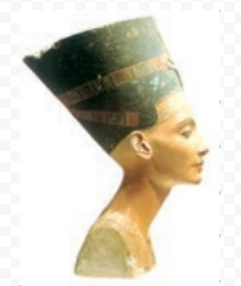 |
Cities, palaces, use of bronze, the potter’s wheel, development of trade (Crete) |
| 1900-1800 | ||
| 1800-1700 | ||
| 1700-1600 | Development of a script (Crete) | |
| 1600-1500 |  |
|
| 1500-1400 | Use of glass bottles (Egypt) | |
| 1400-1300 | 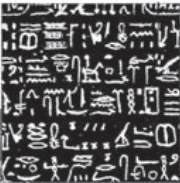 |
|
| 1300-1200 | ||
| 1200-1100 | ||
| 1100-1000 | Use of iron | |
| 1000-900 | ||
| 900-800 | City of Carthage established in North Africa by the Phoenicians from West Asia; growing trade around the Mediterranean | First Olympic games (Greece, 776 BCE) |
| 800-700 | Use of iron (Sudan) | |
| 700-600 | Use of iron (Egypt) | Use of coins (Greece); establishment of the Roman republic (510 BCE) |
| 600-500 | Establishment of a ‘democracy’ in Athens (Greece) | |
| 500-400 | Persians invade Egypt | Alexander of Macedonia conquers Egypt and parts of West Asia (336-323 BCE) |
| 400-300 | Establishment of Alexandria, Egypt (332 BCE), which becomes a major centre of learning | |
| 300-200 | 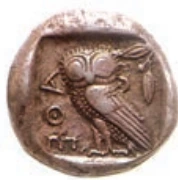 |
|
| 200-100 | ||
| 100-1 BCE | ||
| DATES | ASIA | SOUTH ASIA |
| 6 mya-500,000 BP | Use of fire (700,000 BP, China) | Stone age site in Riwat (1,900,000 BP, Pakistan) |
| 500,000-150,000 BP | ||
| 150,000-50,000 BP | Homo sapiens fossils (100,000 BP, West Asia) | |
| 50,000-30,000 BP | ||
| 30,000-10,000 BP | Domestication of dog (14,000, West Asia) | Cave paintings at Bhimbetka (Madhya Pradesh); Homo sapiens fossils (25,500 BP, Sri Lanka) |
| 8000-7000 BCE | Domestication of sheep and goat, cultivation of wheat and barley (West Asia) | |
| 7000-6000 | Domestication of pig and cattle (West and East Asia) | Early agricultural settlements (Balochistan) |
| 6000-5000 | Domestication of chicken, cultivation of millet and yam (East Asia) | |
| 5000-4000 | Cultivation of cotton (South Asia); use of copper (West Asia) | |
| 4000-3000 | Use of the potter’s wheel, wheel for transport (3600 BCE), writing (3200 BCE, Mesopotamia), use of bronze | Use of copper |
| 3000-2000 | Plough agriculture, cities (Mesopotamia); silkmaking (China); domestication of horse (Central Asia); cultivation of rice (Southeast Asia) | Cities of the Harappan civilisation, use of script* (c.2700 BCE) |
| 2000-1900 | Domestication of water-buffalo (East Asia) | 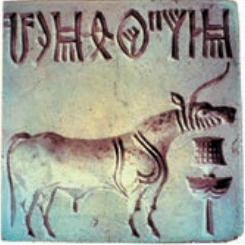 |
| 1900-1800 | ||
| 1800-1700 | ||
| 1700-1600 | ||
| 1600-1500 | Cities, writing, kingdoms (Shang dynasty), use of bronze (China)* | |
| 1500-1400 | Use of iron (West Asia)
|
Composition of the Rig Veda |
| 1400-1300 | ||
| 1300-1200 | ||
| 1200-1100 | Use of iron, megaliths (Deccan and South India) | |
| 1100-1000 | Domestication of the one-humped camel (Arabia) | |
| 1000-900 | ||
| 900-800 | ||
| 800-700 | ||
| 700-600 | ||
| 600-500 | Use of coins (Turkey); Persian empire (546 BCE) with capital at Persepolis; Chinese philosopher Confucius (c. 551 BCE) | Cities and states in several areas, first coins, spread of Jainism and Buddhism |
| 500-400 | ||
| 400-300 | Establishment of the Mauryan empire (c. 321 BCE) | |
| 300-200 | Establishment of an empire in China (221 BCE), beginning of the construction of the Great Wall | |
| 200-100 | ||
| 100-1 BCE | ||
| DATES | AMERICAS | AUSTRALIA/PACIFIC ISLANDS |
| 6 mya-500,000 BP | 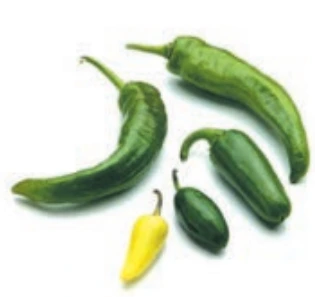 |
|
| 500,000-150,000 BP | ||
| 150,000-50,000 BP | ||
| 50,000-30,000 BP | Homo sapiens fossils, earliest indications of sea-faring (45,000 BP) | |
| 30,000-10,000 BP | Homo sapiens fossils (12,000 BP) | Paintings (20,000 BP) |
| 8000-7000 BCE | ||
| 7000-6000 | Cultivation of squash | |
| 6000-5000 | ||
| 5000-4000 | Cultivation of beans | |
| 4000-3000 | Cultivation of cotton, bottle gourd | |
| 3000-2000 | Domestication of guinea pig, turkey, cultivation of maize | |
| 2000-1900 | Cultivation of potato, chilli, cassava, peanut, domestication of llama and alpaca | |
| 1900-1800 |  |
|
| 1800-1700 | ||
| 1700-1600 | ||
| 1600-1500 | ||
| 1500-1400 | ||
| 1400-1300 | ||
| 1300-1200 | ||
| 1200-1100 | Olmec settlements around the Gulf of Mexico, early temples and sculpture | Settlements in Polynesia and Micronesia |
| 1100-1000 | ||
| 1000-900 | Development of a hieroglyphic script |
The timeline unfolds the journey of Early Societies, tracing the emergence of humans and the domestication of plants and animals. In exploring Early Societies, we witness pivotal moments marked by technological advancements, trade routes, and the rise of urbanization. The transition from nomadic life to settled agriculture represents a crucial chapter in the story of Early Societies, shaping the foundations of human civilization.
<div class="new-fform">
</div>